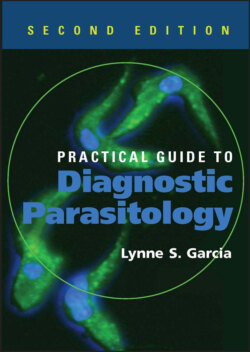Читать книгу Practical Guide to Diagnostic Parasitology - Lynne Shore Garcia - Страница 67
На сайте Литреса книга снята с продажи.
Trematodes (Blood)
ОглавлениеThe sexes of blood trematodes (schistosomes) are separate, and infection is acquired by skin penetration by the cercarial forms that are released from freshwater snails. The males are characterized by having an infolded body that forms the gynecophoral canal in which the female worm is held during copulation and oviposition. The adult worms reside in the blood vessels over the small intestine, large intestine, or bladder. Although these parasites are not endemic within the United States, patients are seen who may have acquired schistosomiasis elsewhere. Schistosomiasis is a chronic disease, and many infections are subclinically symptomatic, with mild anemia and malnutrition being common in areas where the infection is endemic. Acute schistosomiasis (Katayama’s fever) may occur weeks after the initial infection, especially infection by S. mansoni and S. japonicum. Signs may include abdominal pain, cough, diarrhea, high eosinophilia, fever, fatigue, and hepatosplenomegaly. Representative species include S. mansoni, S. japonicum, and S. haematobium.
